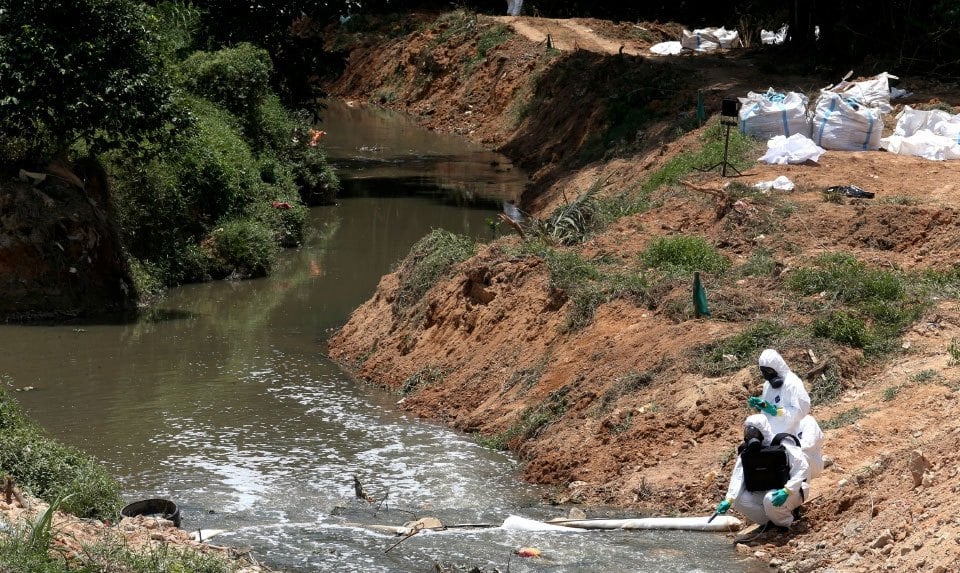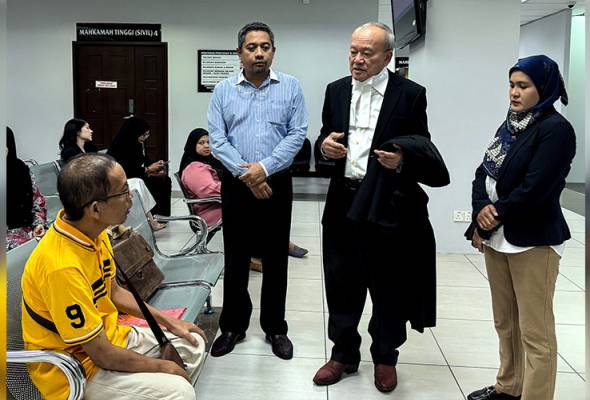By, Haikal Syahmi
Water pollution is the contamination of bodies of water (like rivers, lakes, seas and groundwater) in most cases done by human activities. Industrial discharges, agricultural runoff, sewage and poor waste management dump chemicals, plastics, heavy metals and organic waste into these water bodies. Pollution damages ecosystems, damages wildlife and creates serious health risks for humans, especially those who rely on contaminated water sources for drinking, farming and sanitation. A common problem that plagues the whole world is water pollution that bounds the availability of the cleanest of the elements which needs urgent resolution in terms of improved water quality, whether through stricter legislation, sustainable practices and public enlightenment.

Water pollution in Sungai Kim Kim.
Impact of water pollution
In fact, the water pollution tragedy in Sungai Kim Kim, Johor, hugely affected children as they were included as one of the most vulnerable groups affected during the time of the 2019 chemical spill. In fact, when toxic chemicals were illegally discharged into the river, foul odors diffused over the area, causing nausea, dizziness, difficulty in breathing, and skin irritations to thousands of children. As the condition continued to deteriorate, more than 100 schools in the affected zone were closed temporarily to prevent the students from further exposure, which paused their access to education and left many parents deeply concerned about their children’s health. The incident somehow had students hospitalized and under follow-up treatment because of the possible long-term health effects of pollution exposure. So to many, it was a wake-up call for stronger environmental laws and workable emergency response protocols to protect the school environment and students’ health for the future.

On October 15, 2024, a type of disease known as Myokymia was reported to be the cause of a teenager’s failure to excel in physical education. Irfan Wafiy, 17, the fourth child of five siblings, only received a B in that subject following the disease he allegedly contracted as a result of the pollution of Sungai Kim Kim in Pasir Gudang in March 2019. Answering questions from lawyer Walter Pereira, who represented the plaintiff, Idham Wazir, Irfan Wafiy’s father, stated that his son received a B for the subject, which might be due to the teacher’s discretion at the school, because if the result is E, Irfan Wafiy will fail.
Ways to overcome water pollution

Strengthening of regulations and enforcement Stricter enforcement of industrial waste disposal laws have been announced, including fines up to RM100,000 for truck drivers and RM320,000 for P Tech Resources Sdn Bhd in polluting due to their illegal dumping of waste. The court was also informed that N. Maridass had discharged oily sludge while P Tech Resources Sdn Bhd, which faced eight charges under the Environmental Quality (Clean Air) Regulations 2014, was fined RM40,000 for each charge for a total of RM320,000.
There are diversified ways of tackling water pollution through awareness and education. For example, it can include sensitization on environmental education in schools and communities regarding water pollution, ways of its prevention, and how any one’s contribution can be done. The people can be advised on environmentally sound decisions through informed environmental education. This therefore links to Sustainable Development Goal 3: Ensure healthy lives and promote well-being for all at all ages and Goal 6: Ensure availability and sustainable management of water and sanitation for all.
However, the case of water pollution in Johor through the Sungai Kem Kem incident will have serious implications for public health, especially children. The 2019 chemical spill left many local students with symptoms like: nausea, dizziness, breathing problems and skin irritation, and led to the closure of more than 100 schools to protect students from exposure. This is a tragedy that underscores the absolute necessity of stricter environmental legislation and emergency response timelines and practices to prevent these events and protect delicate populations from them. It is essential to implement measures in order to answer the call of water pollution problem such as tight regulation of waste disposal, and public education and awareness campaigns. These are complementary to global health and sustainable water management goals that were adopted particularly emphasizing the needed protection of environmental and human health in order to protect our future.***
- Double Win: Best Paper and Best Presenter Awards at ICoGESD 2025 - December 3, 2025
- AHAS KIRKHS ‘Ibādah Camp 2025: Empowering the Role of Murabbi for a Resilient Ummatic Future - December 1, 2025
- GALEP 2.0 – Fostering Global Academic Leadership - November 27, 2025
